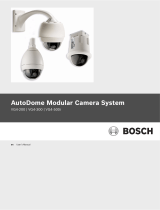Page is loading ...

Service Tool Menu’s
The Brigade BackSense Service Tool menus (via Hyperlink) are as following:
Main Menu
Display Sensor
Set Get Get will summarize the actual data stored in the BackSense unit
ID a unique number setting for the sensor (1-254)
as a recognizer for the display
Type vehicle/machine sensor mounting location
1 = Rear
2 = Right side
3 = Left side
4 = Front
Range The maximum range distance can be set
8 / 6/ 4, 5 / 3 /custom (3, 5 – 8) metre
Pattern value Should not be changed in the field
Calibration Option to program out stationary objects in the detection zone
Display ID Unique number per display (1-254) for multi display environment
Display type Display only takes data from ‘equal’ set sensor
1 = Rear
2 = Right side
3 = Left side
4 = Front
Max number of sensors setting for multi-sensor detection on 1 display
Sensor ID In multi-sensor system display only takes data from programmed sensor
LED Mode set as detection always active or only active when in reverse
Buzzer Mode A = sounds when reverse is selected & when an object is detected
B = sounds when an object is detected
C= never sounds

Heavy Duty Backsense.
PC set up and Unit programming.
Connect the HD Backsense to the service tool as shown in the pictures. Picture 1 for
programming the sensor, Picture 2 for programming the display.
Picture 1
Picture 2

Connect the service tool to the PC via the serial port or via a serial to USB converter.
Connect the power wires to a supply, red to positive black to negative. The blue reverse
wire is not connected for programming.
PC set up
1, Click on ‘START’
2, Select ‘PROGRAMS’
3, Select ‘ACCESSORIES’
4, Select ‘COMMUNICATIONS’
5, Select ‘HYPER TERMINAL’
6, Enter name for new connection (i.e. HD Backsense), change icon if required.
7, Click ‘OK’
8, Select COM that the HD Backsense will use (i.e. COM 8) from the drop down menu
‘CONNECT USING’ in the connect to window that appears automatically.
9, Click ’OK’
10, Click ‘OK’
11, Port Settings from the drop down menus ‘BITS per SECOND’ set to 9600, ‘DATA
BITS’ set to 8, ‘PARITY’ set to NONE, ‘STOP BITS’ set to 1, ‘FLOW
CONTROL, Set to NONE.
12, Click ‘APPLY’, Click ‘OK’.
13, Click ‘FILE’, Click ‘PROPERTIES’.
14, Click on ‘SETTINGS’ tab.
15, Emulation select ‘TTY’ from drop down menu.
16, Click on ‘ASCII SETUP’ button.
17, Make sure only ‘APPEND LINE FEEDS….’ and ‘WRAP LINES THAT….’ are
the
ONLY boxes ticked.
18, Click ‘OK’
19, Click ‘OK’
Sensor set up
1, Press the ‘RETURN’ button on the PC, this will (if the PC has been set up correctly)
connect the PC to the service tool and the sensor.

Press 1 then return to select system, press 1 to select sensor.
een powered up, the Service Tool will wait for the user to press
sensor or a PreView
tm
display.

Press 2 then return to select set properties. Press 5 then return for calibration options.
Press 1 then return to calibrate the sensor. Wait until display says done.
NOTE: Make sure nothing is in the detection zone when calibrating.
Press 0 then return to go to previous menu. If necessary folloe the menus and change the pattern to cone and/or set the
distance to 3m.
3.3 CHANGING PREVIEW
tm
SENSOR PROPERTIES
The “Set PreView
tm
Sensor Properties” menu provides the selection of menus for changing all configurable
options of the PreView
tm
sensor.

Detection Patterns
The Heavy Duty Backsense system is supplied in 26 feet (8 meter), 15 feet (4.5 meter) and 10
feet (3 meter) versions. But, various ranges between 8 to 26 feet can be obtained by
programming the sensor. In addition to the different ranges, programming the sensor can also
change the detection pattern width. Consult the factory for the different detection zone options.
Typical detection patterns for the standard ranges are shown below. Note that these zones are
approximate and will vary depending on the shape and composition of the object. Once the
system is mounted to the vehicle, the detection pattern should be verified.
26’
23’
3’
6’ 9’ 12’ 15’ 18’ 21’
26 foot detection zone(8m)
26’
23’
3’ 6’ 9’
12’
15’ 18’
21’
15 foot detection zone(4.6m)
PV2010
26’
23’
3’ 6’ 9’ 12’
15’ 18’
21’
10foot detection zone(3m)
/
